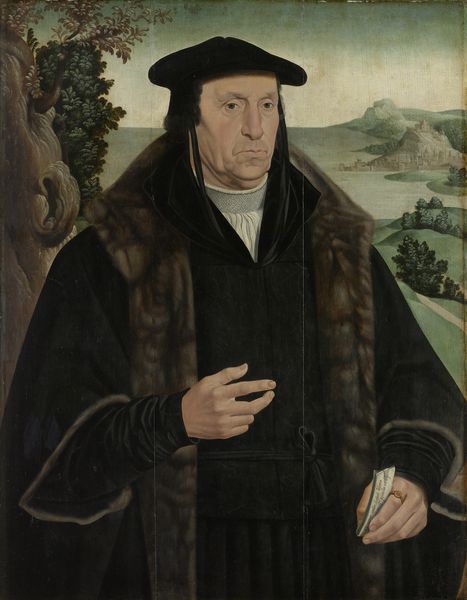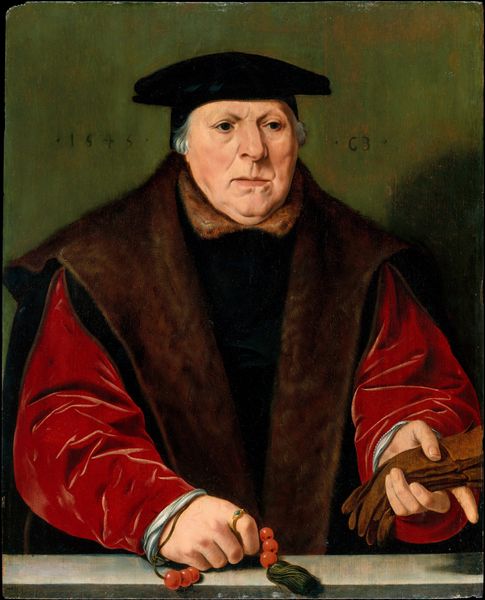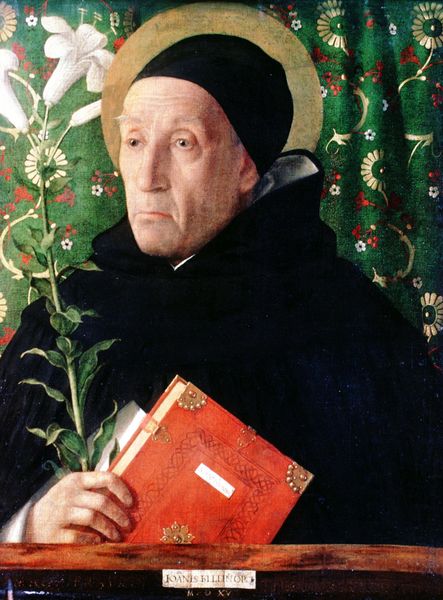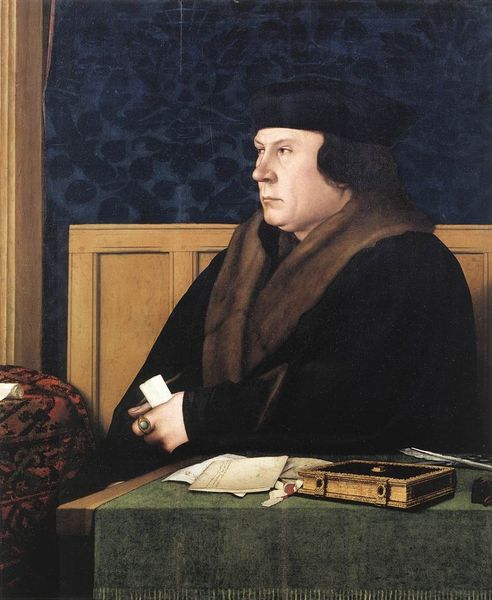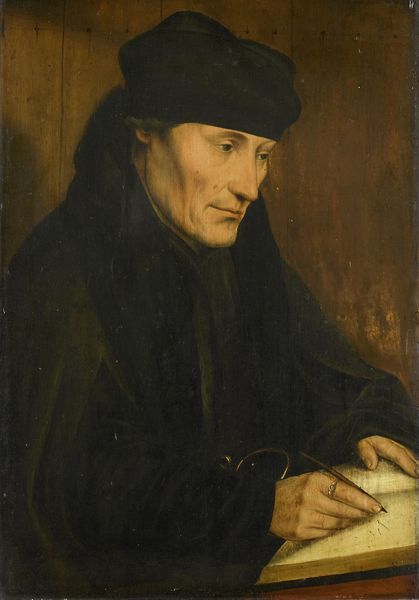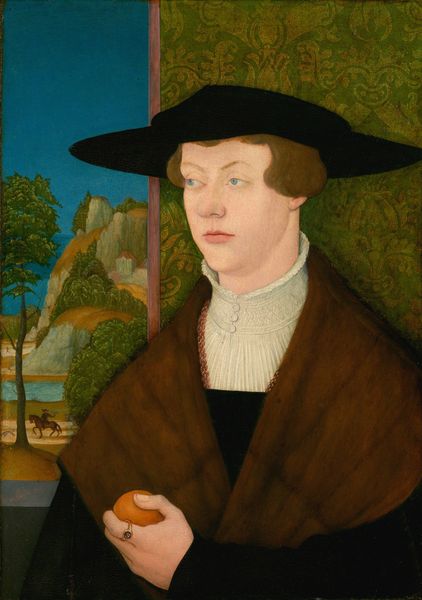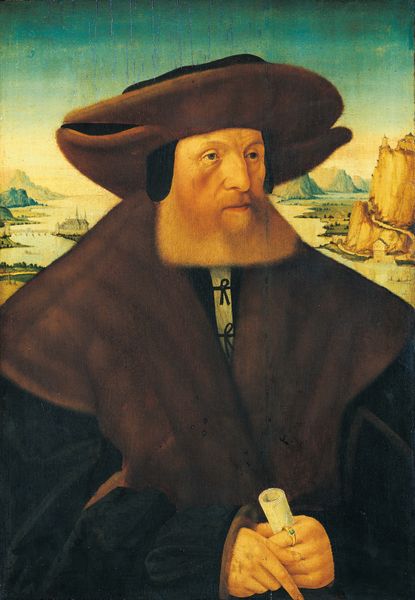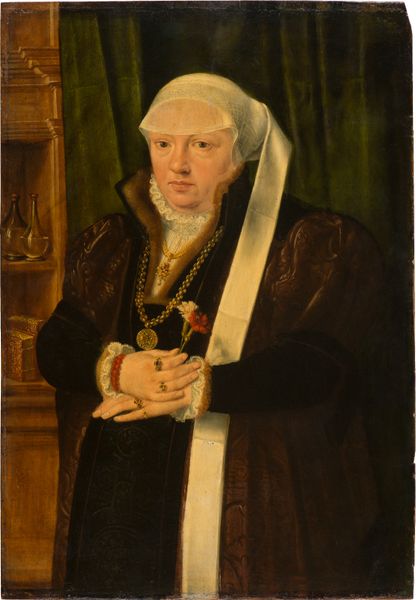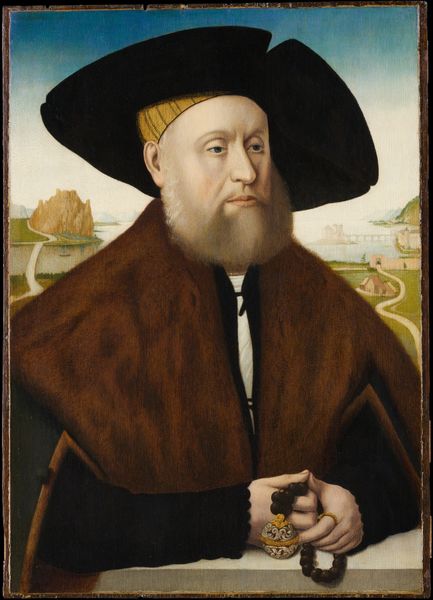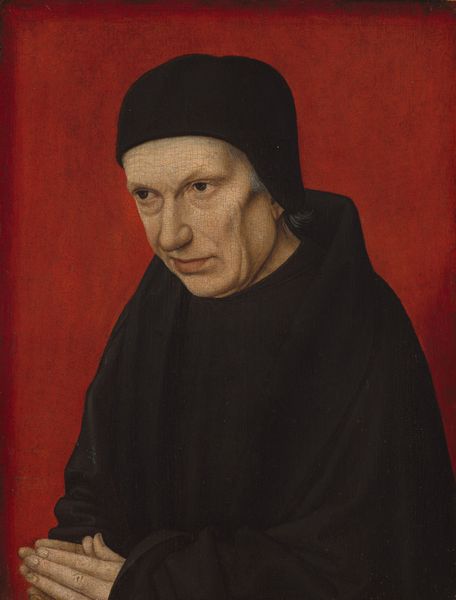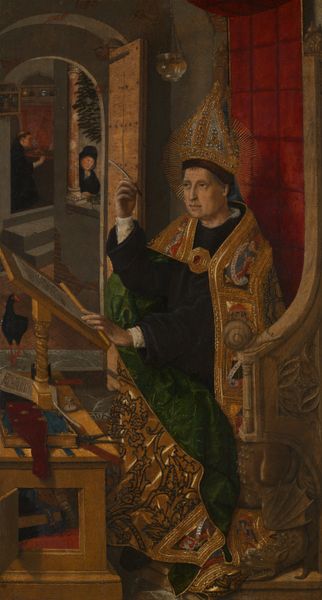
Portrait of a Man in a Landscape holding a Carnation c. 1520 - 1530
0:00
0:00
oil-paint
#
portrait
#
oil-paint
#
landscape
#
figuration
#
11_renaissance
#
oil painting
#
portrait head and shoulder
#
13_16th-century
#
history-painting
#
italian-renaissance
#
portrait art
#
realism
Dimensions: 56.5 x 44.7 x min. 0.9 cm
Copyright: Public Domain
Editor: This is “Portrait of a Man in a Landscape holding a Carnation” by Gerlach Flicke, from around 1520 to 1530, rendered in oil. I’m struck by the contrast between the man’s severe expression and the delicate carnation he holds. What’s your interpretation of this work? Curator: I see a painting that is deeply embedded in the social codes of its time, yet also speaks to the complexities of individual identity. Consider the man’s clothing: these details point to his social standing. What does the landscape signify? And how might the carnation challenge our assumptions about masculinity and power? Editor: The landscape does seem a bit fantastical, almost like a stage set. And the carnation...is it a symbol of love, perhaps, or something more? Curator: The carnation held can absolutely be seen through a gendered lens; a softer, even subversive symbol juxtaposed against a conventional marker of male status and power. Perhaps the sitter wished to subtly signal a different aspect of his character, a vulnerability, or an openness to beauty and intimacy not traditionally associated with masculine authority. Think of the function of dress and adornment throughout history! This allows us to consider broader social themes of gender and class during the Renaissance. Editor: So you are saying this portrait isn't simply a representation, but a negotiation of social expectations and personal expression? Curator: Exactly! By carefully examining the details of this portrait and the socio-historical context, we can unravel the complex interplay between the individual, the artist, and society itself. Editor: This painting definitely offers more layers to consider than I initially thought! Thank you. Curator: My pleasure! It’s in these nuanced readings that we can truly start to engage with the past, in ways that illuminate our present.
Comments
No comments
Be the first to comment and join the conversation on the ultimate creative platform.
